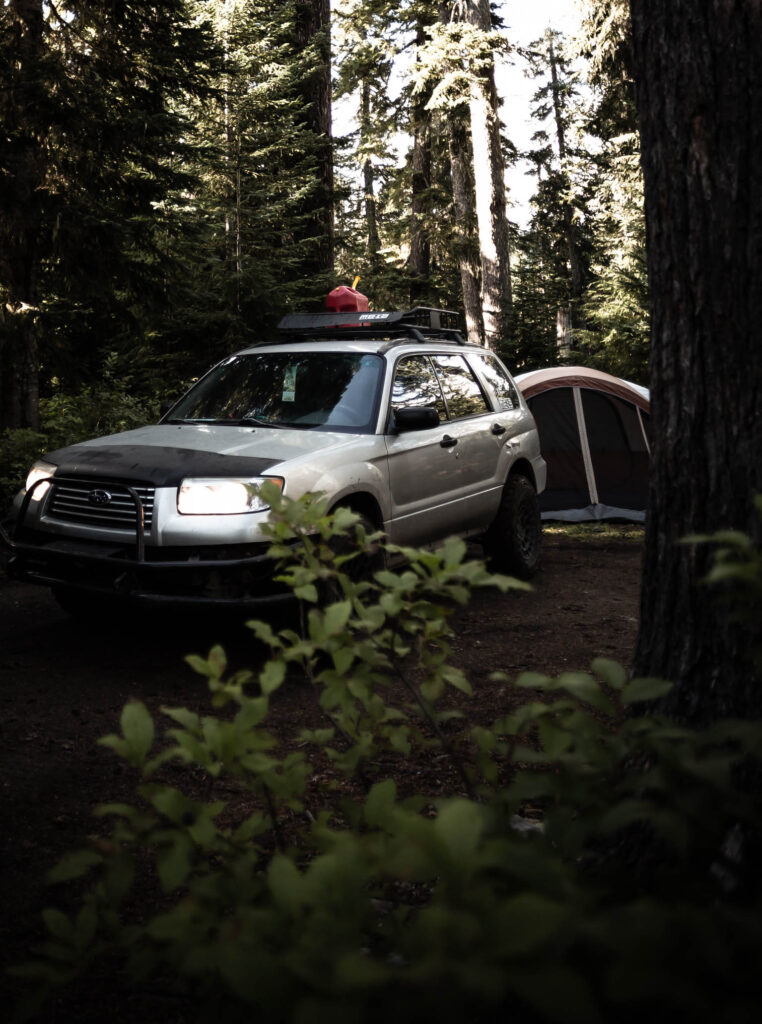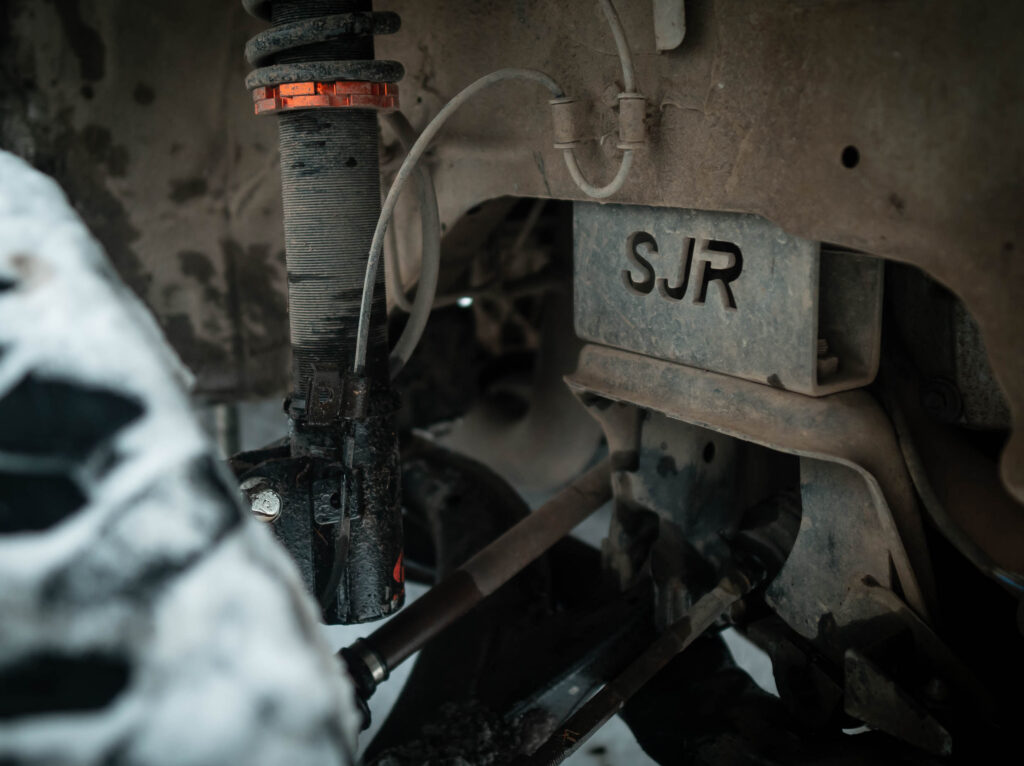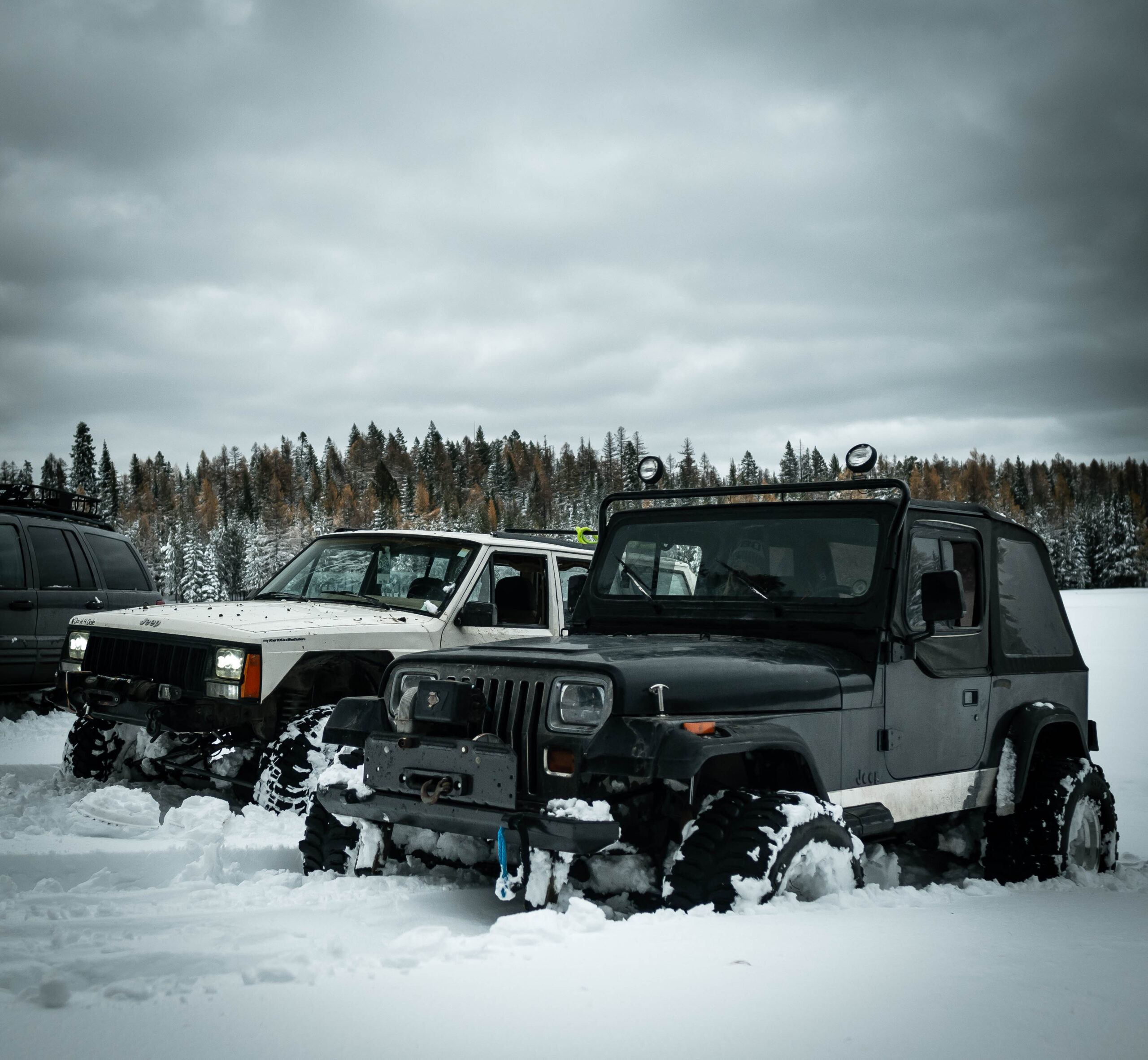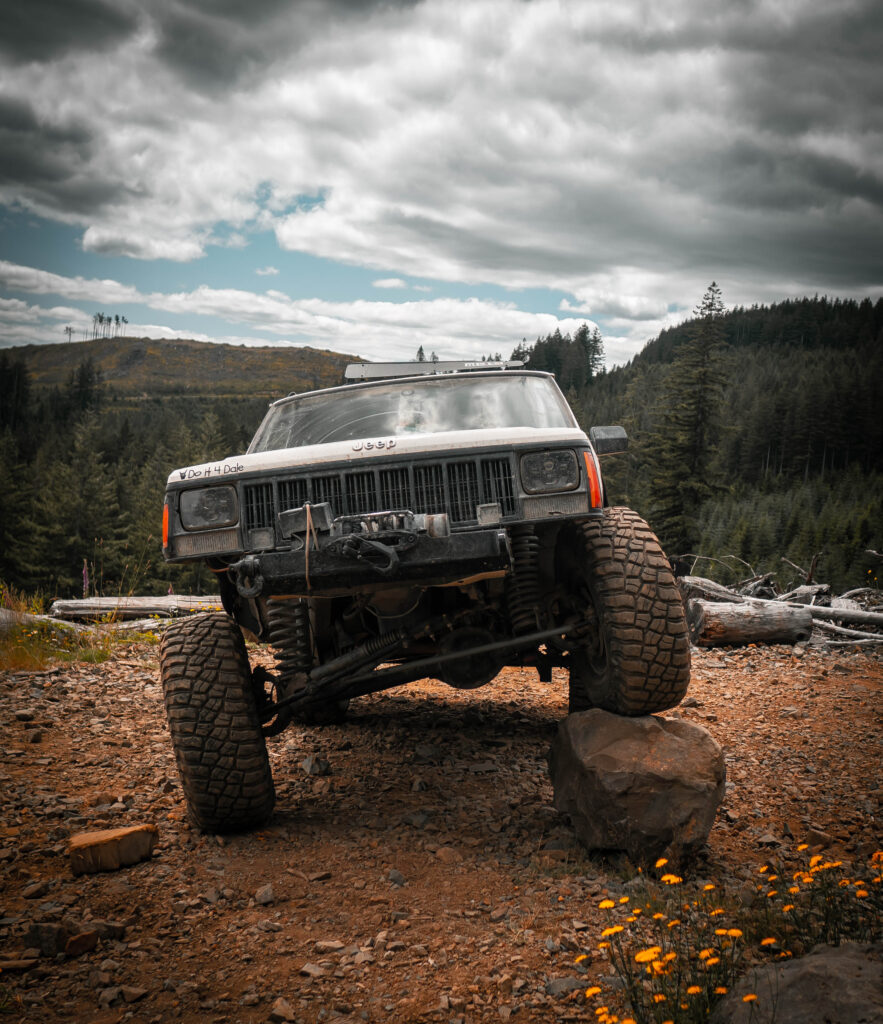
-
Save
For many, the love of outdoor adventure and off-road exploration go hand in hand. For others, off-road driving is just a means to an end when trying to reach remote destinations. As an avid hiker, adventure enthusiast, snowboarder, and off-roader, I’ve had the privilege of owning lifted Subarus for a decade and then venturing into the lifted 4×4 scene for the last three years (don’t worry, I still own a lifted Subaru and it’s not going anywhere!)
In this article, I’ll take you on a journey through my experiences with both types of vehicles, highlighting the pros and cons of each and offering insight for those pondering their next vehicle purchase. Whether you’re seeking versatility, fuel efficiency, and a tight-knit community, or you’re a hardcore off-roader in search of unmatched capability and customization options, my personal comparison will give you some insight into the ideal choice for you. The off-road world holds excitement and challenges, and I want offer some practical thoughts to help you decide which option will best accompany you on your adventures.
The Positives Of My Lifted Subaru Experience
Lifted Subarus have a loyal following among outdoor enthusiasts for several good reasons. I’d like to share a brief look at the benefits and drawbacks of my long running Subaru journey:
1. Versatility:
Subaru’s all-wheel drive system, combined with a lift kit and off-road tires, makes it a great choice for those who need something that can do it all. It can handle both city streets and mild off-road trails. I’ve put tens of thousands of miles on dirt roads, gravel roads, and even decommissioned logging roads that most Jeeps would back away from.
2. Reliability:
Subaru’s reputation for reliability holds up well in off-road conditions. I’ve rarely experienced major mechanical issues despite the amount of demand I’ve placed on the cars in the backcountry.
Subaru parts are pretty affordable and the overall simplicity of the platform makes them relatively simple to repair in the event that something breaks. There are many parts that are interchangeable across different models even with the newer Subarus which makes upgrades and repairs easier to perform.
3. Fuel Efficiency:
Subarus are usually purchased by outdoor enthusiasts for their fuel efficiency without sacrificing traction. This is great for long-distance travel to reach off-road destinations without spending hundreds in fuel costs.
My current lifted Subaru averages around 23-24mpg when the roof rack is unloaded and newer Subarus can get even better fuel mileage than mine. I have saved thousands on gas over the years by using my Subies to get to camping spots, the ski hill, and camping spots that required mild off-road driving.

-
Save
4. Community:
There’s no question about it – the Subaru community is one of the most supportive enthusiast groups I’ve been in. I’ve always been blown away by the fact that many Subaru owners want other Subaru owners to succeed. I’ve had friends help me swap parts out at 1am just so I could get the car back on the road for a trip. I’ve been given parts just because someone wanted to see them “go to a good home.” Sharing knowledge, experiences, and trail recommendations with fellow Subaru owners is a unique aspect of this journey.
5. Affordability:
Even after factoring in lift kit expenses, and the cost of larger tires, lifted Subarus tend to be more budget-friendly than some larger 4×4 options. This makes it an accessible choice for those getting into off-roading without the huge investment that might come with a car like a 4Runner or Jeep Rubicon.
Even the newer Subaru options are pretty affordable. But if you need something really cheap, selecting an older Subaru that’s a little rough around the edges is actually my favorite approach for getting out on the trails.
My most recent Subaru purchase cost me less than $1800 and it was actually pretty clean on the inside. I was able to get it so cheap because the title was rebuilt (it had front quarter panel damage that I found photos of,) the bumpers were a little rough and the tires were bald. I already planned to replace the tires and the bumpers were getting trimmed right away anyhow. It was the perfect negotiation tactic without detracting from my plans for the car or the overall ownership experience.
For under $3500 total, I had a lifted Subie that was ready to take on almost anything I needed it to. I added a lift kit and aftermarket wheels with off-road tires. Of course, I have since invested a bit more money in it for fun. But it didn’t take a lot to get it trail-ready initially.

-
Save
The Drawbacks Of Lifted Subaru Ownership
While I have had a fantastic experience with mine, owning a lifted Subaru does come with some limitations. I’d like to share some of the things to keep in mind when considering one for off-road use.
1. Ground Clearance Limitations:
While a lift kit improves ground clearance, it doesn’t quite match the clearance of larger 4x4s and there is a bit of a ceiling that Subarus run into with lift kits. Typically, you don’t gain much after you go past two inches since it requires subframe spacers (these are metal spacers that go between the unibody and the subframe in order to retain healthy CV axle angles that won’t damage them) that will push the drivetrain back down. This can be a limiting factor on extremely rugged trails. If you plan to visit areas that present serious obstacles, you may want to be cautious.
Along with regular ground clearance, you’re also limited to the ground clearance that’s gained by installing bigger tires. Due to the nature of the Subaru design, they can’t comfortably handle tires that are much bigger than roughly 5-10% overall diameter than stock and I’ve found that larger tires provide the most off-road capability.
Below, you can see an example of a 2 inch SJR front subframe spacer that’s installed on my friend’s 2002 Subaru WRX which allowed him to go all the way up to a 4 inch lift:

-
Save
2. Lack of a Low Range Transfer Case:
As much as I love my lifted Subaru, I’ve found that not being able to select a set of lower gears by shifting into 4LO really presents some limitations for the types of trails that I can navigate (a transfer case like the ones found in a 4×4 houses a set of gears that operate in a manner similar to a secondary transmission. When you engage 4LO, you are effectively reducing the gear ratio, which results in a multiplication of the torque being delivered to the wheels in motion.)
Having a low range transfer case allows you to slowly crawl up or down objects without causing damage to the vehicle that may occur at higher speeds. With Subarus, you have to use momentum to get up difficult obstacles. Unfortunately, this can present the risk of damage to your vehicle and sometimes momentum simply isn’t an option in tight spacers.
3. Off-Road Limitations of Subaru Suspension:
While independent suspension allows for a bit more clearance in mild snow and mud in stock form, there comes a point when this setup creates serious limitations for more hardcore off-road use. The solid axle design on most jeeps and in the rear of many Toyota trucks can allow for much more suspension travel and are generally more durable.
Solid axles also naturally create more tire contact when driving off-road on uneven surfaces. For example, if one wheel is up on a tall rock, the opposite tire is forced down to make contact with the ground. This allows for much more traction on bigger objects. Solid axles do have large “pumpkins” that can gather snow and mud though. But larger tires can solve that issue.
My Experience After Three Years With a Lifted Jeep

-
Save
It’s been almost three years since I decided to purchase a 4×4 vehicle. I wanted to add it to my garage for wheeling more difficult trails and keeping up with my friends who own fully locked and linked Toyotas, Jeeps, and other true wheelers. It took me awhile to find something that met all my needs and fit in my budget. But I finally landed on the perfect 1996 Jeep Cherokee.
My addition of a lifted 4×4 was significantly different than lifted Subies and brought with it a set of unique experiences:
1. True Ground Clearance:
The most significant advantage of a lifted 4×4 is having a low range transfer case that provides the ability to truly gain ground clearance by adding larger tires. I’ve been able to easily install tires that are almost a full 6.5 inches taller than stock with almost no loss in power. That creates more than 3 inches of ground clearance by simply upgrading to a bigger tire size.
Of course, going that much bigger with tire size involves the need for new differential gears, a lift kit, and some steering upgrades. But nonetheless, the process has been pretty easy and the capability is fantastic.
Installing tires that much larger in a Subaru is essentially impossible since swapping gears in a Subaru simply isn’t a thing. They’re not available from any manufacturer that I’m aware of and the front differential is not designed to be modified. Additionally, the lack of a dual range transmission would still make tires THAT big unusable in any situation.
2. More Power and Towing Capacity:
Having a lifted Jeep has provided me with more power for challenging trails. I can climb up just about anything with it regardless of the conditions. The added power and more robust frame also makes it easier to perform recoveries. Pulling out other vehicles is a breeze in the Jeep.
Additionally, most 4x4s excel in towing capacity, making them ideal for anyone who wants to take gas powered “toys” with them on their camping trips and adventures. While this isn’t a deal breaker for off-road use, it’s something to consider if you plan to use it for hauling gear. This wasn’t really a selling point for me, but I wanted to mention it since I feel like my Jeep would give me the option to tow if I ever felt the need to.
3. Extreme Off-Roading:
If you’re into rock crawling or conquering the most challenging terrains, a 4×4 is the way to go. The capability that I’ve experienced in my Jeep is unmatched compared to my Subaru. There’s simply no way I could ever drive my Subaru over a boulder that’s almost two feet tall. My Subaru has absolutely exceeded my expectations in many cases, but it is not truly built for hardcore wheeling the way many 4×4’s are.
The way my Jeep is designed from the factory to protect the engine and transmission is really convenient and gives me peace of mind when I’m in the rocks. I also really appreciate that the axle shafts are relatively easy to repair if I break a u joint on the trails.
As I’ve mentioned, having 4LO makes navigating extreme obstacles so much more doable and easy. Not having to charge up an obstacle at 25mph makes the whole process much simpler and safer.
4. Off-Road Customization:
4x4s provide endless customization options, from suspension systems to winches and lighting. The amount of aftermarket support for vehicles like 4Runners, Jeep Wranglers, and Ford pickup trucks. Finding true suspension lifts for a 4×4 is usually easier, cheaper, and simpler to install. The number of other people buying accessories for their trucks allows for a slightly cheaper cost that eventually makes its way to the consumer.
Anytime I’ve shopped for off-road Jeep parts, I’ve had multiple options and spend my time researching which is best. With the Subaru, most of my time researching is spent finding out if anyone even offers the part I’m looking for.
5. Resale Value:
In almost every case, an off-road customized 4×4 will retain resale value much better than a lifted Subaru. Since there are so many more folks looking to purchase a 4×4 for off-road driving, it makes more sense in the marketplace for someone to spend a little extra on a lifted 4×4. But since lifted Subarus are somewhat of a niche car, it may actually detract from the resale value if the car has been outfitted with a lift and bigger tires.
My experience with selling a lifted Subaru has involved needing to wait a bit longer to find the “right” buyer who understands the value of the installed modifications. Most buyers have actually attempted to pay less due to the lifts on my Subarus saying that the car won’t handle as well.
You can still get a good price when selling a lifted Subaru, it just requires a bit more patience and expertise. You have to be ready to explain to potential buyers why and how the modifications improve the driving experience.
Downsides of Owning a Lifted Jeep

-
Save
Despite the added capability and power of a lifted 4×4, there are some downsides to consider before you run out and grab one. Some of these drawbacks may cause you to lean towards purchasing a lifted Subaru without any doubts.
1. Fuel Economy (It’s really bad) of 4×4’s:
Trucks and 4×4’s are notorious for their lower fuel efficiency. The bigger engines and heavier frames do their jobs well but can lead to increased operating costs. I’ve gotten as low as 8 mpg in my Jeep and never more than 16 mpg. When gas is about $4.50 a gallon, it’s not hard to burn up $200 just in travel to and from the trailhead.
The 2021 Jeep Wrangler with the 3.6 six cylinder gets a combined 20mpg on stock tires. Once you add mud terrains and install bigger tires, that number could plummet to an average of 15mpg depending on driving habits and tire choice. If you compare that to the four cylinder Subaru Outback which gets an average of 28mpg on stock tires, the Jeep could cost an additional $800 annually in fuel expenses in stock form under normal driving conditions. For some folks, poor fuel economy could be an absolute deal breaker.
Unless I’m heading to an area that involves serious 4×4 trails, I take my Subaru if it’s more than 50 miles away. It’s substantially cheaper and the on-road driving experience is far more comfortable.
2. Overall Cost of Ownership:
Acquiring and maintaining a 4×4 can be significantly more expensive than owning a Subaru. Despite the occasional good deal on an old Jeep XJ or something similar, they typically demand a higher selling price in the used and new car market. I’ve seen old Land Cruisers with 300k miles sell for over $10,000. They’re great cars that will last well into the 500k range with proper maintenance, but that’s not always feasible for some off-roaders.
Additionally, a bigger engine and overall larger car requires more money to maintain. Even simple things like oil changes and tune-ups cost more money to perform. My Jeep takes significantly more oil and coolant than my Subarus and requires two more spark plugs any time I do a tune-up. The larger tires also cost substantially more per corner. While I may spend $120 per tire on the Subaru, it costs close to $230 for the bigger tires on the Jeep. This isn’t a huge cost difference that you’ll feel all at once, but it does add up over time.
My experience has been that the extra capability is actually what leads to the biggest expenses. Since they can overcome bigger obstacles on the trail, I find myself pushing the car harder and through areas that present more danger to the vehicle. It’s not uncommon for me to come home in the Jeep with a broken window, damaged wheel, punctured tire, or dented fuel tank (I need a skid plate back there asap!) In general, I do find my Subaru to be the most reliable option. But that is partially due to the way I drive them.
3. Less Urban-Friendly:
While my Jeep excels off-road, they can be cumbersome and less practical for everyday city driving. The larger mud tires are loud, the solid axles make the car handle rough and poorly, and the low MPG’s make it horrible for daily driving.
The additional size and overall feeling of the car makes it much less fun to park as well. I regularly find myself having to park further away from my destination since my Jeep won’t fit into smaller parking spots. I don’t want to risk accidentally bumping someone’s car with my wider tires.
That being said, if you’re in the market for any newer 4×4, they are actually pretty comfortable all things considered. The price, bulky size, and fuel requirements are still an issue to consider with new 4×4 trucks and SUV’s though.
In my experience, the choice between a lifted Subaru and a lifted 4×4 ultimately comes down to your specific needs and preferences, as well as the type of off-roading adventures you plan to use it for. If you value versatility, reliability, fuel efficiency, and a strong community of kind-hearted enthusiasts, a lifted Subaru offers a fantastic and budget-friendly choice.
Conversely, if you are a die-hard off-roader with a taste for extreme trails, heavy towing needs, and a desire for extensive customization options, a 4×4 might be the ideal match for you. While the cost of ownership and lower fuel efficiency may be concerns, the unmatched capabilities of 4x4s on challenging terrains make them worth the investment for someone with these requirements.
I currently have the fantastic opportunity to enjoy both platforms simultaneously and I like them both for unique reasons. But that may not be in the cards for everyone. No matter which path you choose, the off-roading community is filled with passionate individuals ready to share their experiences and wisdom. Whether it’s behind the wheel of an off-road Subie or a lifted 4×4, the journey of exploration and adventure is bound to lead you to a life of new friends and unforgettable memories.
Share via:
